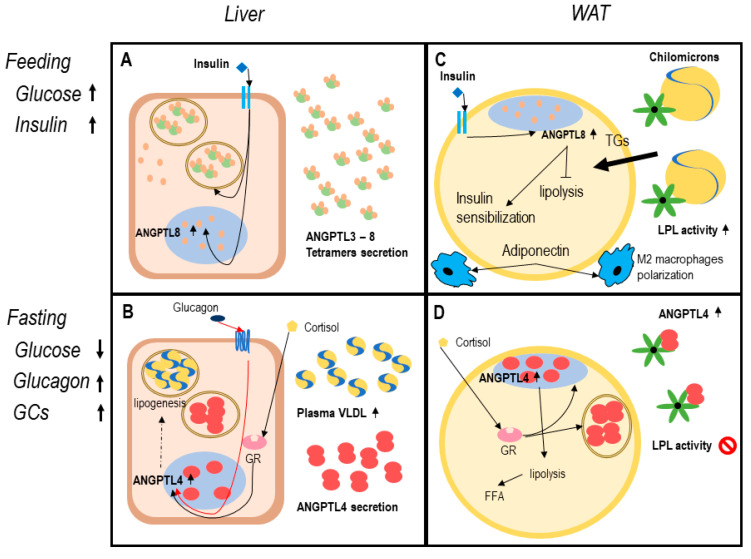Figure 1.
The angiopoietin-like system (ANGPTLs) model in healthy adipose tissue. Legend: functioning of ANGPTL system in healthy adipose tissue. Dotted lines report data with a low level of evidence. Panels (A,B) describe the hepatocyte function in feeding and fasting. In response to insulin increase (A), hepatocytes secrete ANGPTL8, and ANGPTL3. ANGPTL3-8 tetramers inhibit lipoprotein lipase (LPL) in oxidative tissues [7,68]. Reduced blood glucose in fasting (B) leads to increased circulating glucocorticoids and glucagon that induce ANGPTL4 expression [82,94]. In the liver, ANGPTL4 expression possibly enhances lipogenesis and gluconeogenesis, VLDL production, and secretion, as proved in mouse models [89]. Panels (C,D) describe white adipocyte function in feeding and fasting. During feeding (C), insulin enhances nuclear expression of ANGPTL8 determining a block in lipolysis and enhanced insulin sensibilization, adiponectin secretion, and M2 polarization of resident macrophages [67,68,71]. In fasting (D) ANGPTL4 is expressed both in nucleoplasm and secreted [74,75,84,86,94]. In this physiologic condition, lipolysis is functional to liberate free fatty acids (FFA) deposit and promotes energy utilization [7,81,89].

